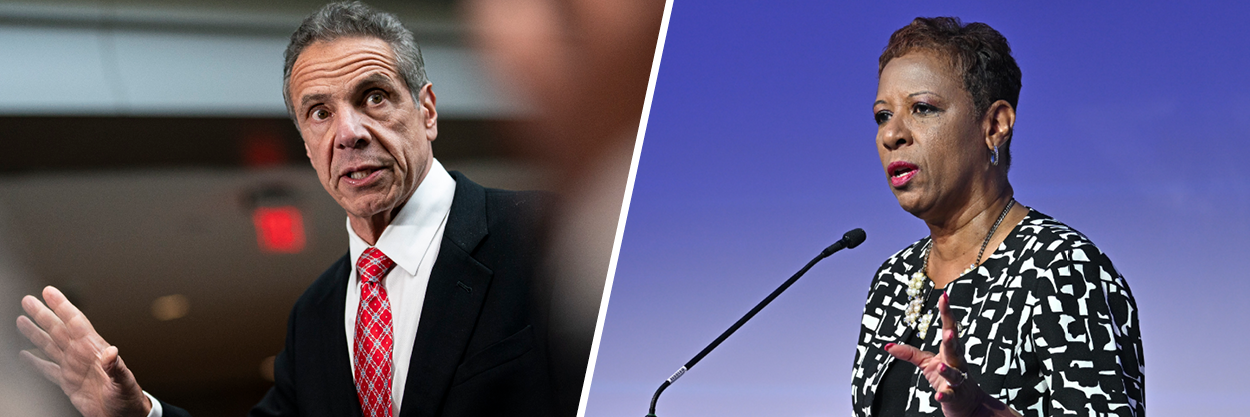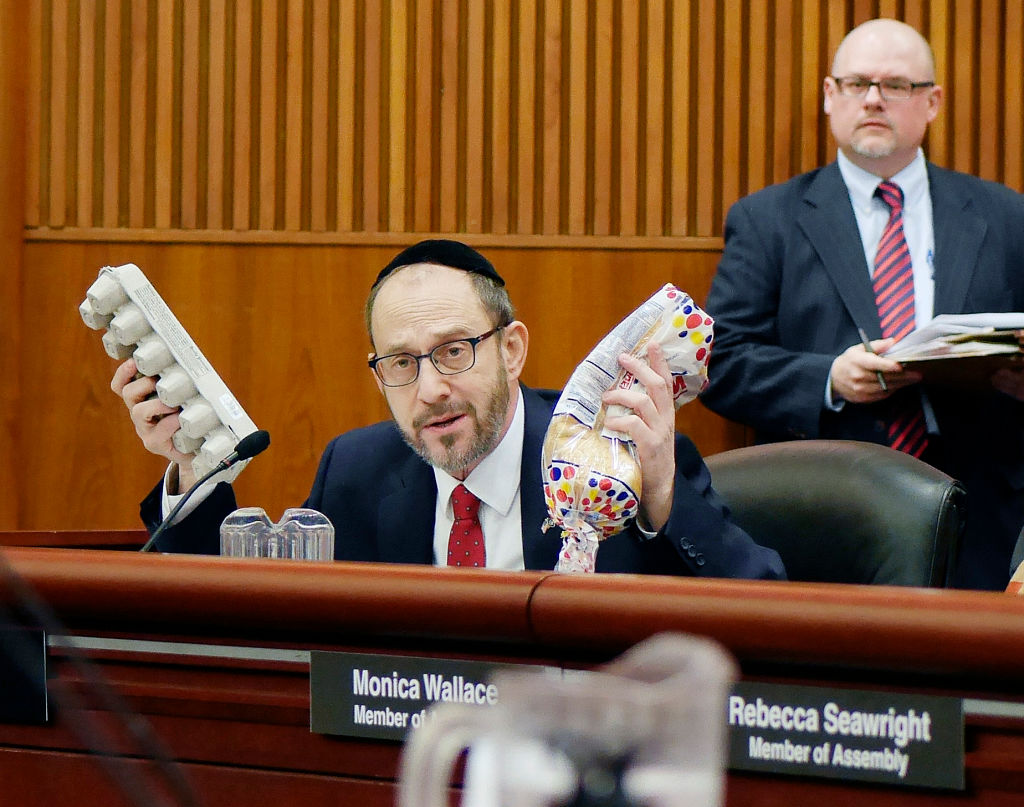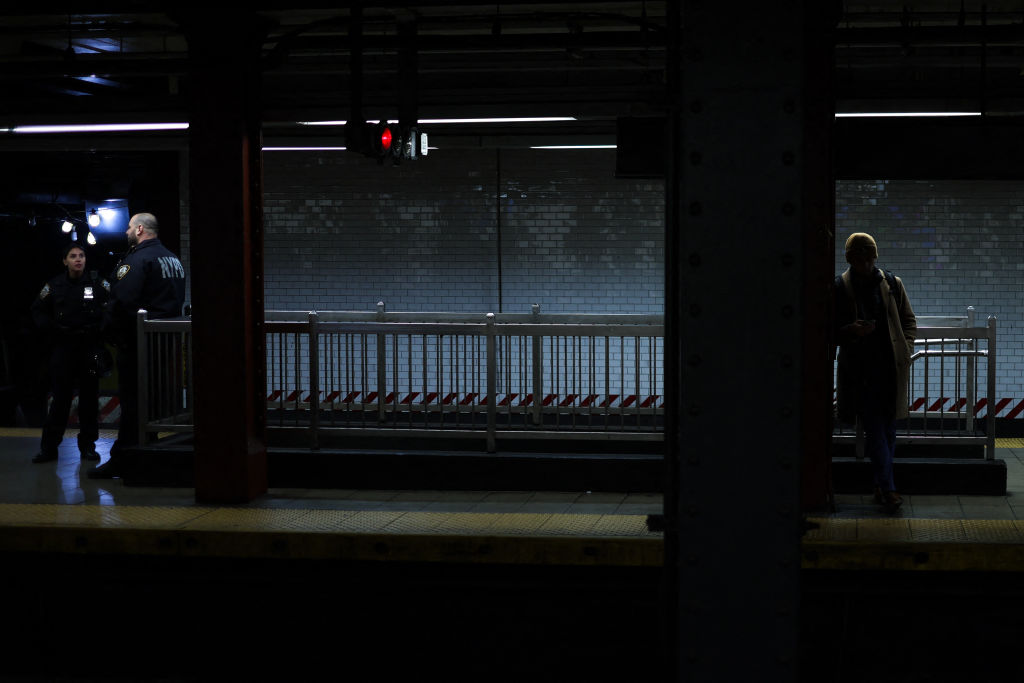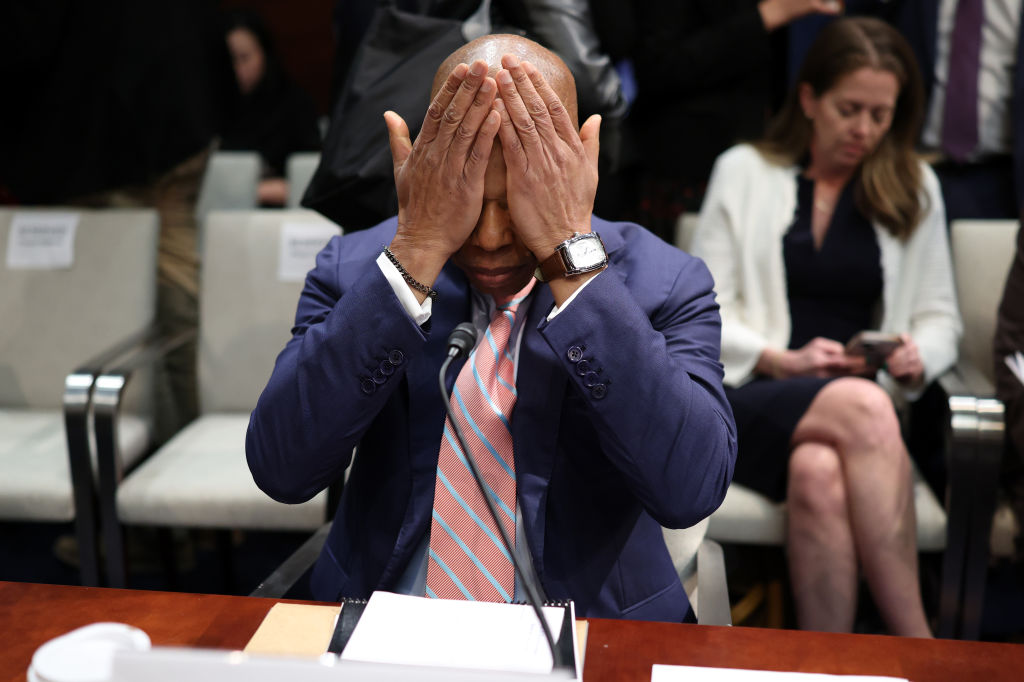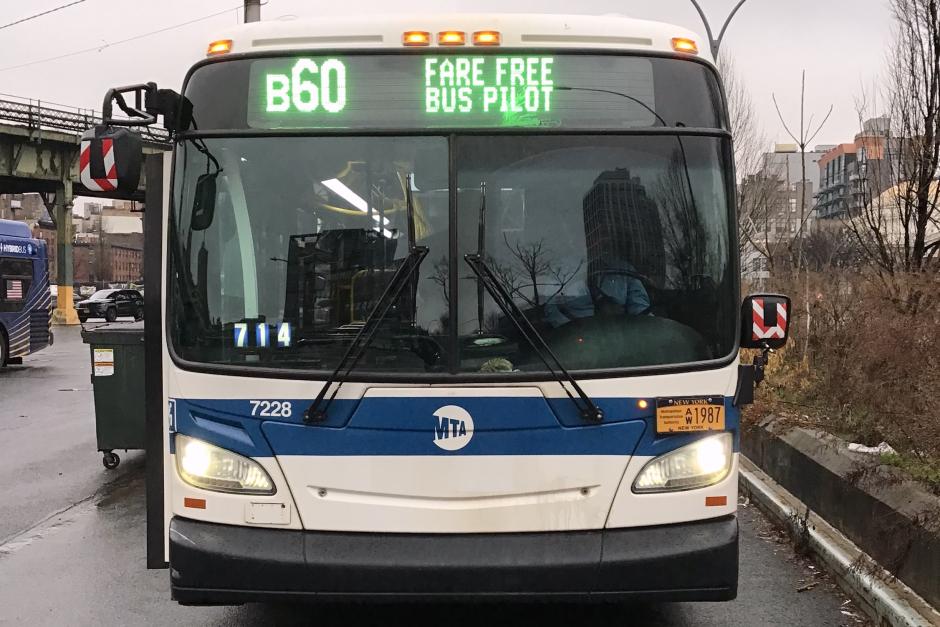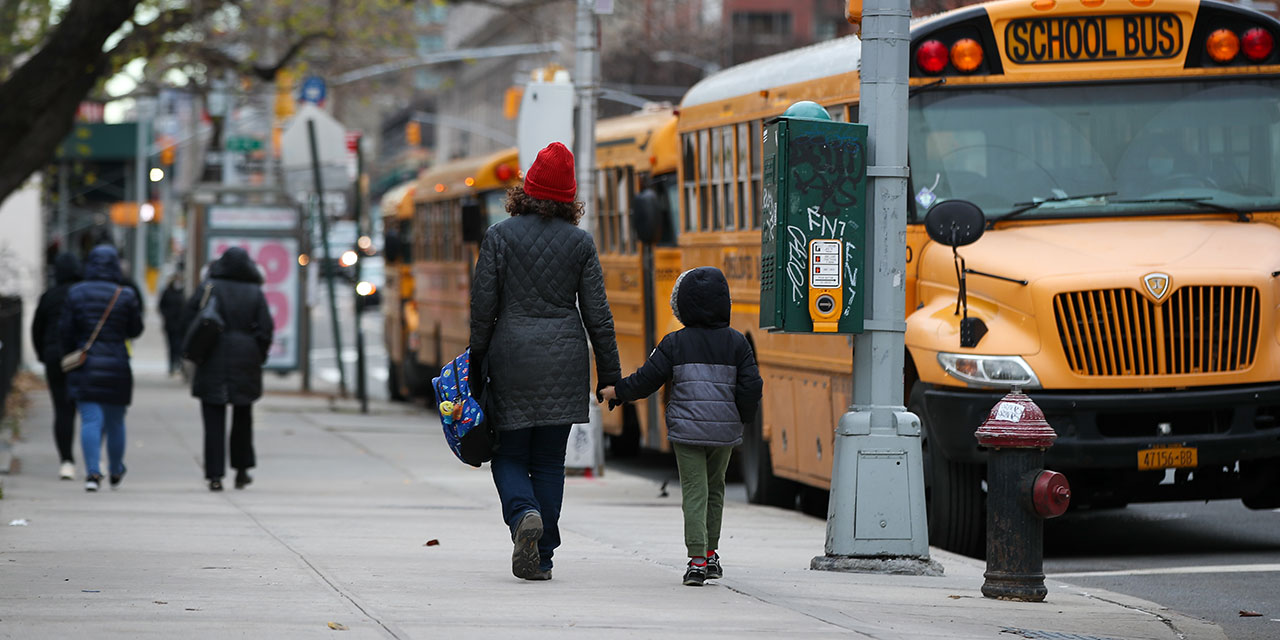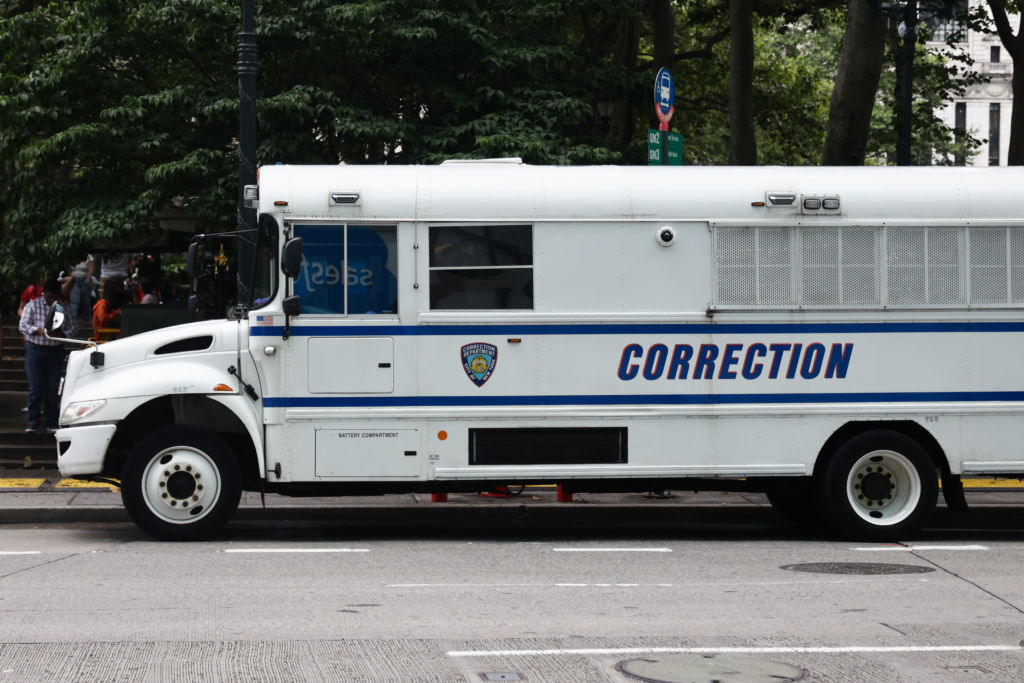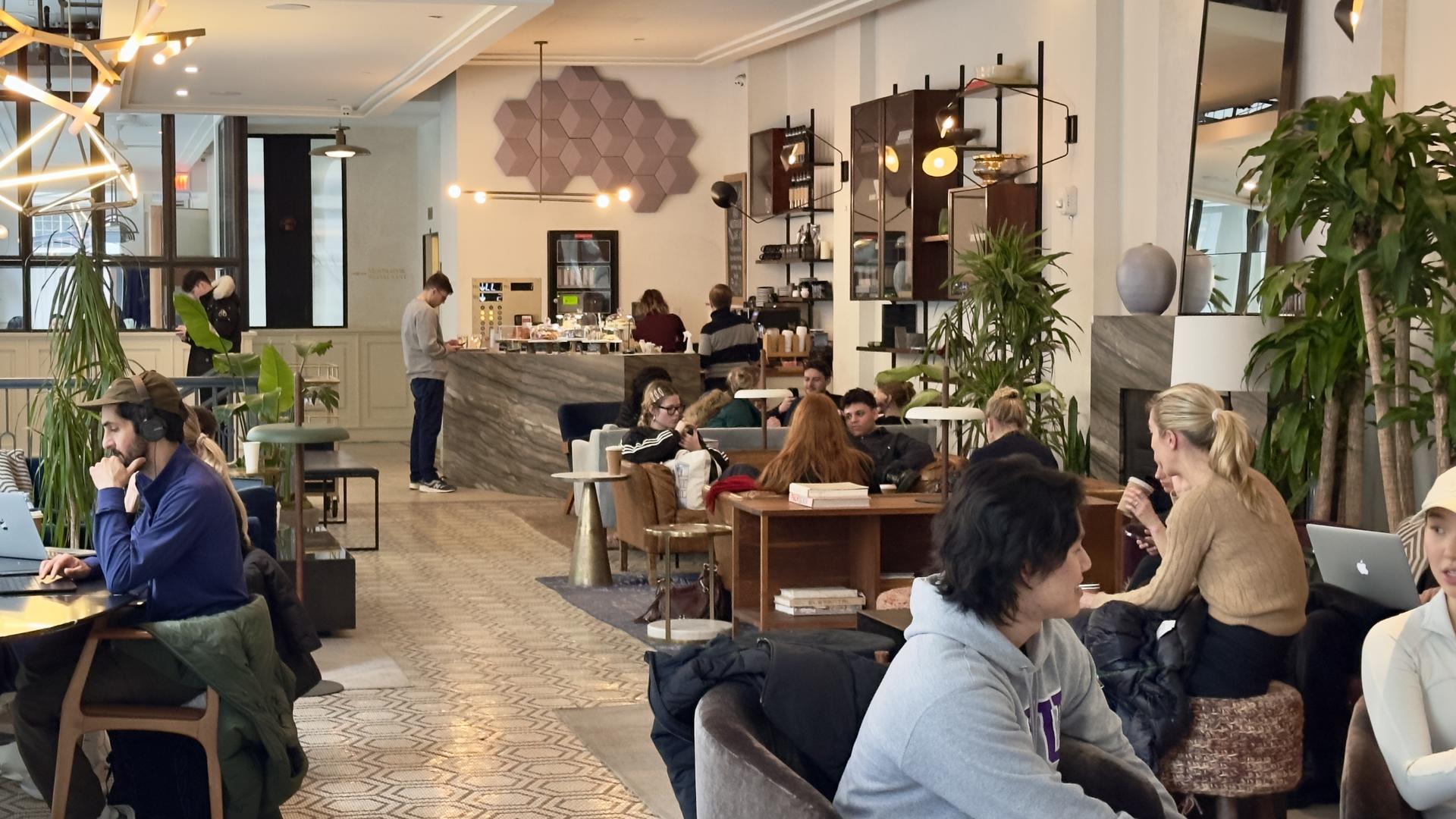|
Forwarded this email? Sign up for free to have it sent directly to your inbox.
|
|
|
Welcome back. It's 16 weeks until the June 24 primaries. We’re following the mayoral campaign and keeping our eye on how candidates’ proposed policies will shape the future of our city. Thoughts? Questions? Email me. Thank you for reading! Liena |
|
|
This week, the mayoral race became even more crowded as former Gov. Andrew Cuomo and City Council Speaker Adrienne Adams formally announced their candidacies.
The New York Post instantly picked a side: They published a scathing editorial calling Cuomo “New York’s Biggest Liar” — honestly, a bit of a puzzling move against a man who could well wind up the strongest center-right candidate in the race, never mind his passion for revenge.
A different Adams: City Council Speaker Adrienne Adams is pitching herself as a no-nonsense, no-drama candidate who can win the middle class black voters in Southeast Queens. One of my favorite NYC political observers, Michael Lange, took a look this week at Adams and at the Queens Democratic machine behind her, wondering how much it will matter when it comes down to voting in the primaries.
|
Senator Simcha Felder at a budget hearing in 2017. Photo Credit: Paul Buckowski/Albany Times Union via Getty Images archive |
State Sen. Simcha Felder, who represents Brooklyn’s large, vote-rich Orthodox Jewish community, told Politico that Cuomo could be the second coming of Rudy: “There are many similarities to when Giuliani ran, and I certainly think that he and Gov. Cuomo have many similar characteristics.”
One hangup is the lockdowns: “It’s not as though people don’t care about that, but people think about now,” Felder said about the friction with Cuomo over the pandemic restrictions. “They think about getting on the train, about people lying on the sidewalks defecating and about their safety and security primarily.”
Indeed, I suspect a lot of voters think Cuomo might be the best one to address those problems — even ones who don’t particularly want to vote for him. |
Photo Credit: CHARLY TRIBALLEAU / AFP via Getty Images |
For the third straight month, crime in New York City is down by double digits. The NYPD’s latest data shows that major crimes declined in February compared to the same period last year—a trend city officials attribute to a more strategic, zone-based policing approach.
And NYPD’s pilot of stricter enforcement against offenses like smoking on the subway in just two districts resulted in 671 summonses and arrests of 313 individuals—180 of whom had active warrants—in just one month, according to The New York Post. As our Charles Lehman recently wrote, “Low-level crime enforcement leads to better enforcement of bigger crimes. And yet… Despite this progress, Mayor Eric Adams continues to face criticism, because of the persistent quality of life issues the city is struggling to get under control. Everything from scooters to public urination, NYPD Commissioner Jessica Tisch told the Association for a Better New York last week, “gives the impression of chaos and disorder.”
|
Trump More Popular than Adams in NYC |
Photo Credit: Kayla Bartkowski/Getty Images |
The latest Quinnipiac University poll, released this week, shows that just 20% of voters approve of the job Mayor Adams is doing—the lowest approval rating of any NYC mayor since the university began polling the city’s registered voters almost 30 years ago. (The second-lowest rating was also set by Adams in December 2023, when he had a 28% approval rating.) Source: Quinnipiac University Poll
Adams is now less popular in the city than President Trump, who has a 30% approval rating. Governor Hochul stands at 43%. No matter what Adams is doing, voters seem unimpressed, with just 25% expressing satisfaction with the direction of the city. This marks another record low; the previous lowest point was in Quinnipiac’s July 2003 poll, when 30% of voters were satisfied with the city’s trajectory. Despite Adams’ unpopularity, the poll suggests that if the primary were held today, Cuomo would win, while both Adams and Mamdani would perform well—an interesting result given Adams’ poor approval ratings. |
Andrew Cuomo announced his run with a 24-page policy plan aimed at affordability that was a bit light on granular detail, but seemed to have something for every constituency. Lower taxes? More affordable housing? Universal Pre-K? Check, check, check. It’s even got that Trump favorite — ending taxation on tips. This week, I’ll only harp on my own pet peeve, the shaky case for free buses.
Brad Lander released a detailed housing plan aiming to build 500,000 units, and proposing to build new neighborhoods on four of the city’s 12 municipal golf courses. He is also proposing comprehensive planning to enable easier housing development in the city. Zellnor Myrie released his free universal afterschool plan, he's also proposing to extend pre-K hours to help parents who don't finish work at 3pm.
Scott Stringer's plans seem to be all out.
Zohran Mamdani's Baby Basket idea is being rolled out by Mayor Adams. Except he's calling them Baby Boxes. |
Assemblymember Zohran Mamdani, the race’s proud socialist, is pushing to make all New York City buses free — and Cuomo’s proposal similarly suggests continuing to experiment with the issue.
Both candidates point to a pilot program on five bus routes, one in each borough, that saw a 30% increase in ridership and 39% reduction in assaults on drivers. But if you take a look at the study that evaluated the program before it was scrapped as too expensive, you'll see the small scale. For instance, verbal and physical assaults against drivers — a much-touted success of the program — fell from … 36 to 22.
And while there are a few other cities testing out free transit, there is no large city in the world that has free transit. While there are no details on Mamdani’s website as to how he plans to provide the free buses as a mayor, he did put up a Fix the MTA page. But we’re a bit skeptical that a program whose biggest stage so far has been Kansas City will play in the Big Apple.
|
If you’d like to learn more about the candidates, the New York Editorial Board, of which both Nicole Gelinas and I are members, has so far interviewed Brad Lander, Jessica Ramos, Zohran Mamdani, and Jim Walden. We interviewed Whitney Tilson on Thursday and a transcript should be posted by Monday.
|
Photo by Tayfun Coskun/Anadolu Agency via Getty Images |
Almost 35% of NYC's public school students were chronically absent last school year, up from 25% before the pandemic, according to a new report from the Manhattan Institute. Chronic absenteeism is defined as missing 10% of the school year, or about 18 days.
The problem is most severe in the lower grades and high school. Given how important reading at grade level by third grade is as a predictor of future success, these numbers are particularly concerning: 60% of children in Pre-K at DOE schools are chronically absent, though that number drops to 30% by third grade. In NYC, only about half of third-grade students are deemed proficient in English and math on state tests.
Attendance is worse for Black and Hispanic students, those with disabilities, and those who are homeless, according to the data. However, we don't have much insight into the severity of absenteeism among individual students. Back in the 2007-08 school year, about 20% of elementary school students were chronically absent, and a quarter of them missed more than 38 days, according to an old report on truancy. Such information is not as readily available in more recent data.
Recently, the New York State Department of Education decided to change how they track absences and school performance. They replaced the easy-to-understand Chronic Absenteeism rate—which for the past decade tracked how many students missed 10% of the school year—with a more complex Attendance Indicator, expected to provide more detailed insights.
I asked Danyela Souza Egorov, who wrote the report, what surprised her most. “The high absenteeism rates in kindergarten and first grade were unexpected, as younger children rely on adults to get to school,” she said, adding that she is “deeply concerned that these young students will struggle to catch up on the learning loss experienced over the past few years.”
Her report makes three recommendations: a public messaging campaign about the dangers of missing school; judging schools, in part, on their success in ensuring daily attendance; and requiring school principals to identify chronically absent students and develop a plan to contact their families.
“Reducing chronic absenteeism will require schools with leaders who are laser-focused on the problem,” the report states. “Unless school leaders prioritize this issue, all their other initiatives will be negatively impacted by the reality that students are missing too much learning time." |
Photo Credit: Jakub Porzycki/NurPhoto via Getty Images |
A remarkable investigation by the non-profit New York Focus revealed the extensive influence of a family's patronage network on the state prison system. Patriarch, Daniel Martuscello Jr., began as a guard in the late 1960s and later ran a maximum-security prison in Coxsackie.
Now five of his six children, including current Commissioner Daniel Martuscello III, play important roles in the system. This network, dubbed the "friends and family" program by staff, is at the heart of a bitter prison guard strike. | |
|
Photo credit: Liena Zagare |
|
|
A weekly newsletter about NYC politics and policy, published by the Manhattan Institute, edited by Liena Zagare. | |
|
Copyright © 2025 Manhattan Institute, all rights reserved. |
|
|
|

